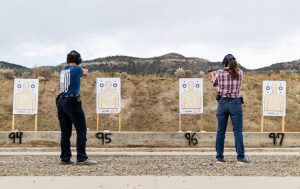Mark Cole
Rarely has the world seen such a formidable body of men gather together for a solemn purpose as when the members of the Second Continental Congress met in Philadelphia in 1776.
In addition to the weighty duty of representing the citizens of their respective colonies, each of the delegates who would sign the Declaration of Independence brought something significant to Philadelphia: Jefferson brought his eloquence; the world famous, brilliant and elderly Ben Franklin lent celebrity and thus political cover; Sam Adams baptized the movement with fire and intensity; John Witherspoon’s religious credibility boosted the cause in the eyes of the devout.
Each signer was courageous and enormously significant;
a few of them were truly indispensable.
But even among the giants of the American Revolution, one man stands out: John Hancock.
Hancock’s early life did not obviously reveal that he would become a leader in the independence movement. Like his friend and co-agitator Sam Adams, Hancock was educated at the Boston Latin School and Harvard, graduating from college when he was 17 years old. He then went to work for his uncle, and quickly gained a reputation for being capable and honest. He was even sent on trade trips to England and on one of these he observed – perhaps presciently – the coronation of King George III.
When he was still a young man, he became the heir to the family shipping and import/export fortune. This made him the richest man in Massachusetts. He thus took his place among the Boston elite – most of whom remained unwaveringly loyal to the British crown, no matter what abuses were heaped upon the colonies.
But Hancock would take a different course. He sided with the independence movement.
As the crown taxed the colonies and hampered their commerce, Hancock struggled to maintain his business and supply necessities to colonial merchants. As the measures of King George III against the colonists became more oppressive and lawless, Hancock became more evasive and covert.
He simply refused to give in. He organized a boycott of British tea and began smuggling lead, glass and paper into Massachusetts. Other merchants – even if they were not as eager to stick their neck out as Hancock – relied on him to fill their shops. And the customers of those merchants who purchased the necessities of life in those shops also depended on Hancock. Had Hancock taken the easy way out, plenty of people would have suffered.
Hancock named the ship used in his smuggling operation Liberty and she rapidly became a tangible symbol of the cause of colonial independence, if not a celebrity of sorts. When Liberty was impounded by the British in 1768, a riot followed.
Stay tuned for Part 2 of Hancock’s story NEXT WEEK!
Get the entire John Hancock’s story, and so much more –
Check out Mark’s book:
Lives, Fortunes, Sacred Honor: The Men Who Signed the Declaration of Independence













